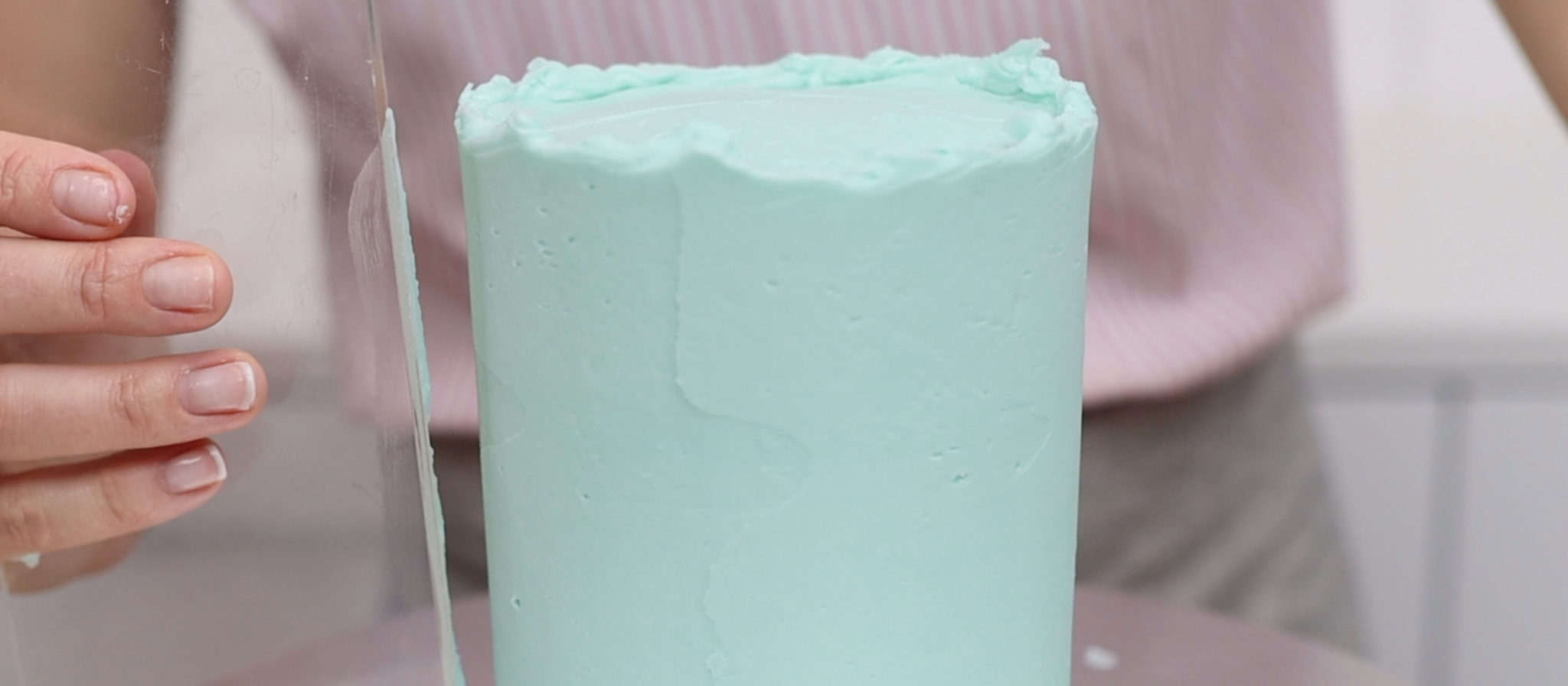
Smooth frosting is easy when you know what mistakes to avoid. In this tutorial I’ll show you each mistake, explaining how to avoid or fix it!
If you prefer to watch a video of this tutorial, scroll to the bottom of the page.
Mistake #1
The first mistake is to put your cake board straight on a turntable. When you apply any pressure at all to the cake as you frost it, it’s going to slip and slide all over the turntable, making it impossible to frost. I think this is the most frustrating mistake for frosting, combined with this next mistake:
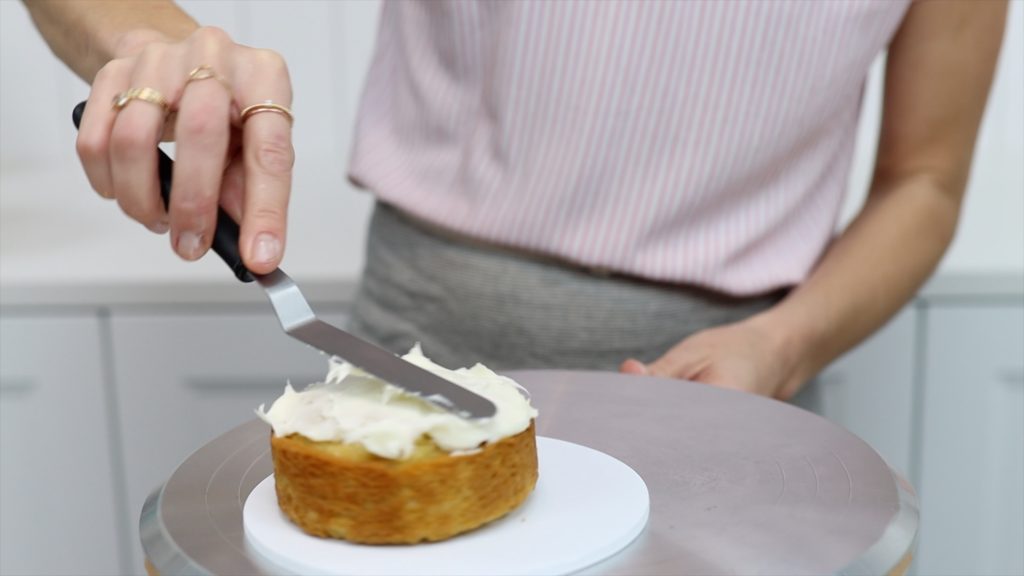
Mistake #2
Not using buttercream as glue. If you place your cake straight onto your cake board, there’s nothing attaching it to the cake board so where you spread on your filling and frosting, the cake is going to wobble around and tall cakes can even topple over with the pressure from your
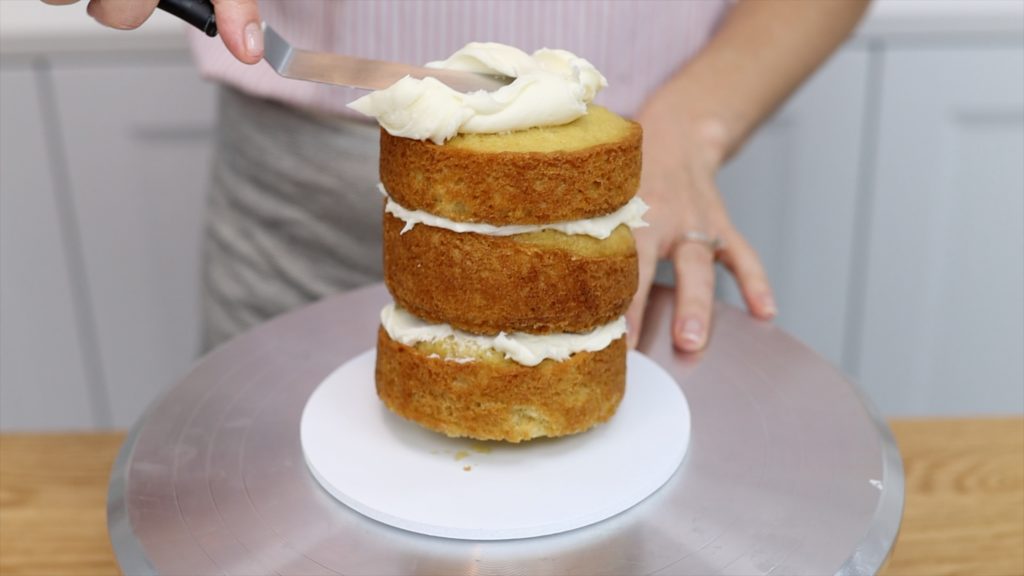
Solution: Spread or pipe a generous dot of buttercream onto the middle of the cake board and press your first layer of cake down onto the dot, which will act as glue and attach the cake to the cake board so it doesn’t move around.
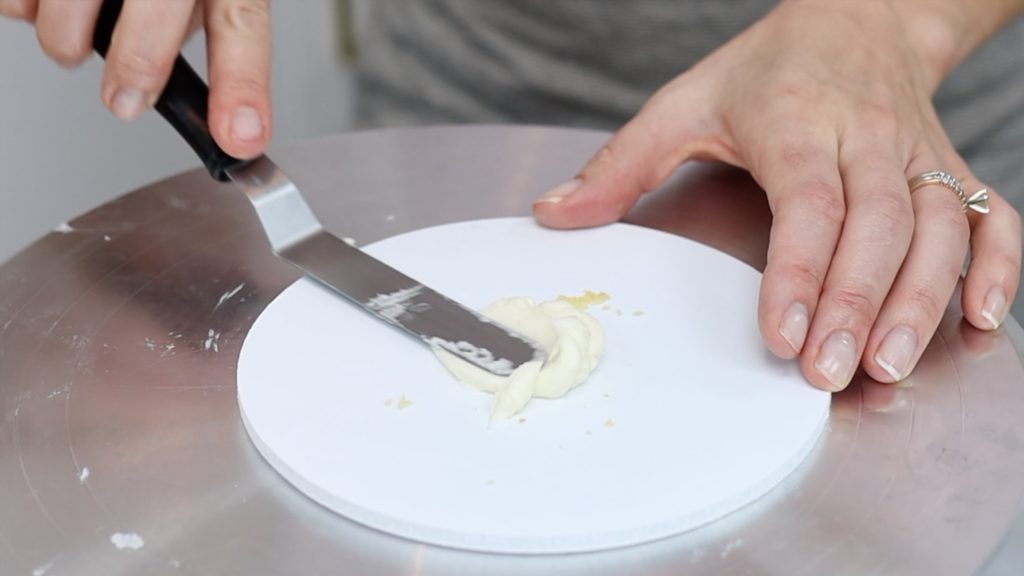
To stop the cake board from sliding around, use a non-slip mat or a ring of masking tape to stick the cake board to the turntable, so the cake board stays in place while you frost the cake. Now your cake will be much quicker and easier to assemble and frost.
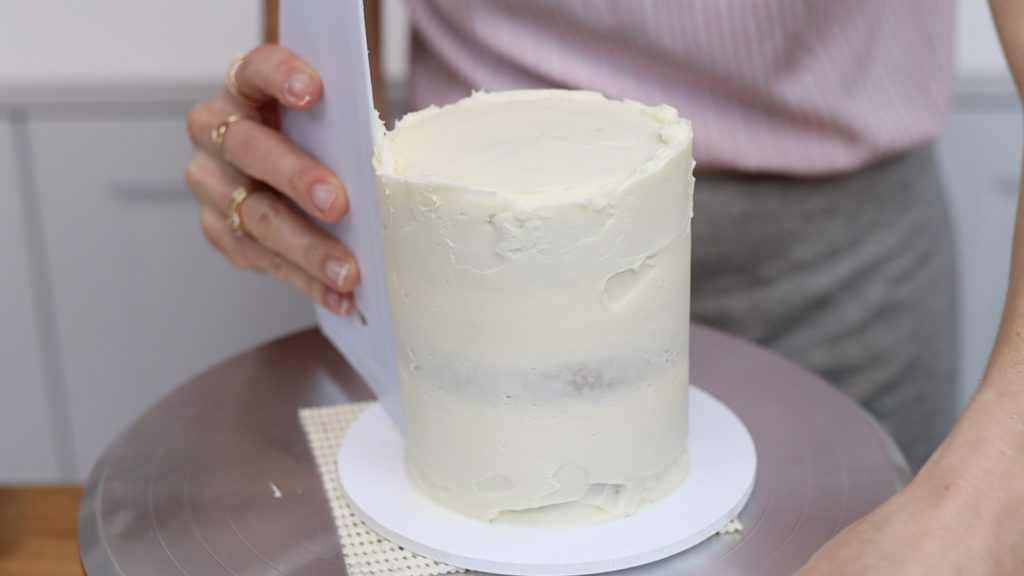
Mistake #3
If you choose to frost your cake when the layers are at room temperature, the cake will wobble around, even though it’s attached with a dot of buttercream on the cake board and there’s a non-slip mat on the cake board.
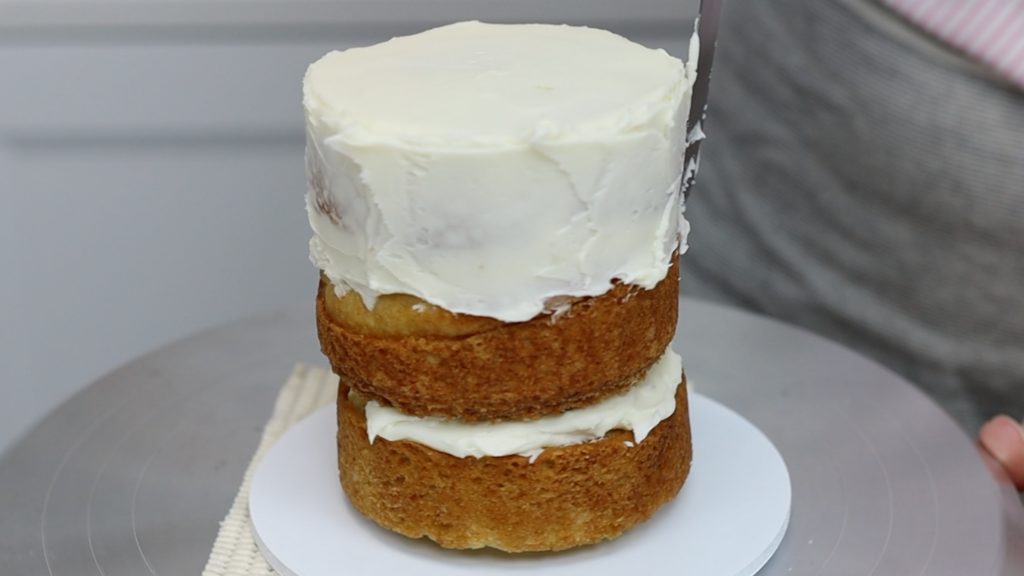
Solution: Compare this to a cake that’s been chilled in the freezer for just 15 minutes before frosting - the cake layers firm up so the cake doesn’t wobble around, AND since the layers are firmer, they’re less crumbly which makes frosting easier and neater. The cake layers will still be moist and delicious when they warm up to room temperature.
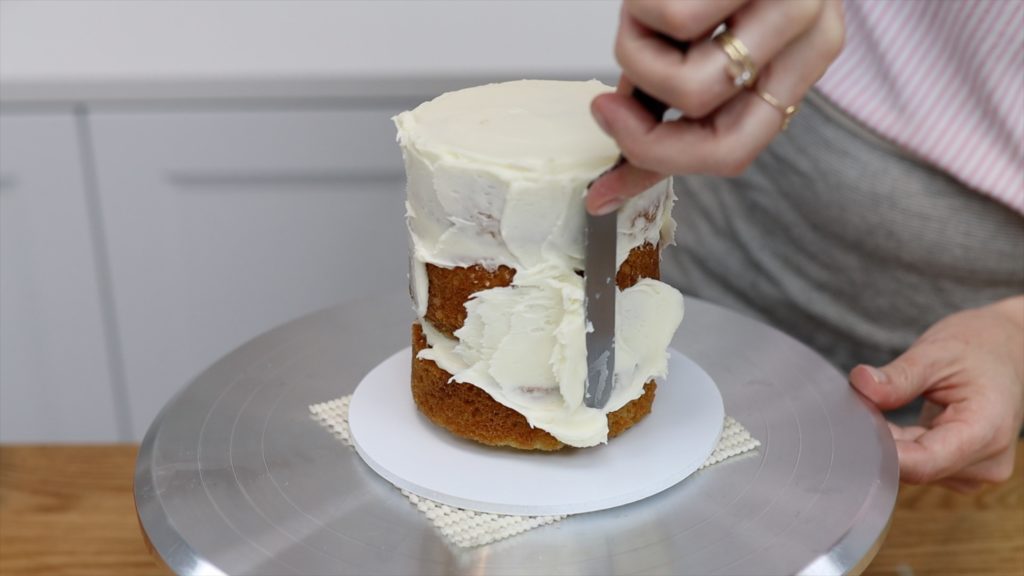
Mistake #4
The consistency of your frosting is key and if you’re using buttercream that’s too stiff, it will be almost impossible to spread onto your cake because it’s so thick, and even if you can spread it on, it will be very difficult to smooth with a cake comb later.
Solution: If you find out when you start frosting your cake that the buttercream is too stiff, scrape off any that you just can’t spread and add a few tablespoons of milk or cream to the rest of the bowl of buttercream so it’s a thinner consistency and that will be MUCH easier to spread.
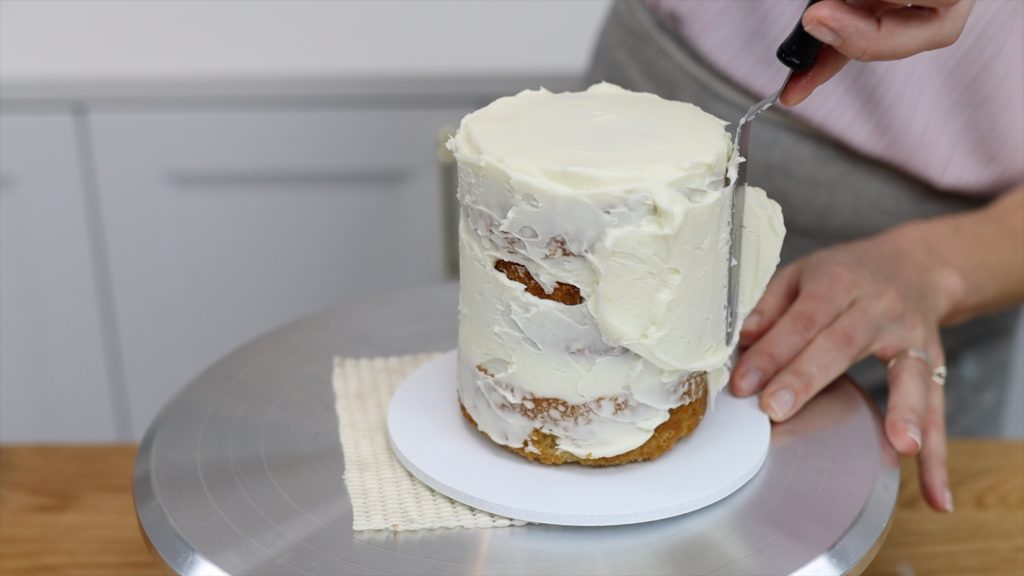
Mistake #5
This thin layer of frosting is called a crumb coat, and a common mistake is to skip it and only apply one single layer of frosting, like this. The reason it’s a mistake is because the purpose of the crumb coat is to catch all of the crumbs that come off the cake while you’re spreading the frosting on, so that those crumbs get stuck in the crumb coat and then when you add the final layer of frosting, the crumbs don’t get into that so you have beautifully smooth, crumb free frosting. But here, where the first layer of frosting is also the final layer of frosting, you can see all the crumbs that come off the cake and are getting into this frosting, which will be visible specks on the outside of the frosting on the finished cake, AND because there’s only one layer of frosting you can see the dark shadowing of the cake layers underneath the cake, even though this is a vanilla cake so the colour of the cake is light compared to say, dark brown chocolate cake.
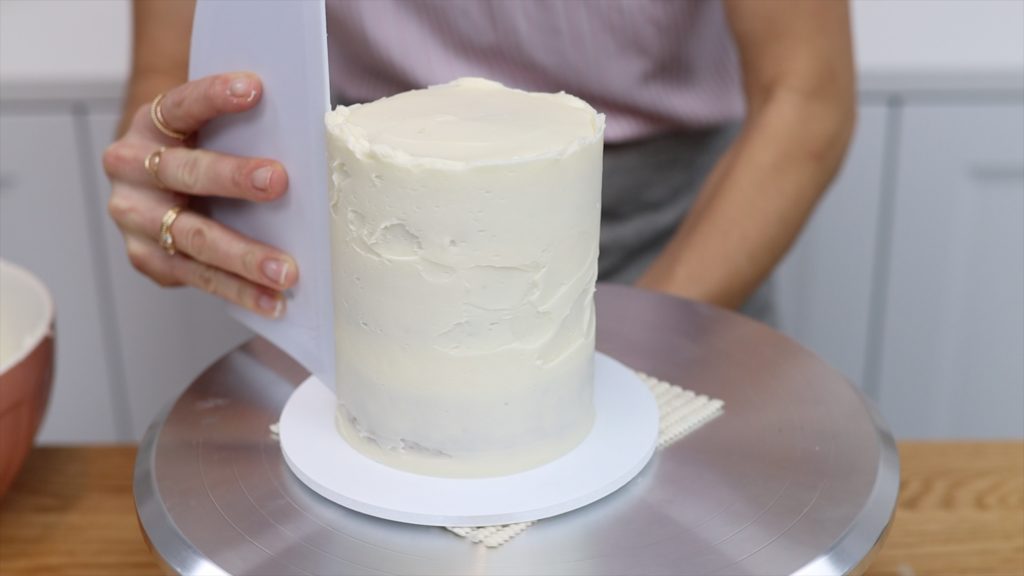
Solution: There’s a simple solution for this mistake: apply a crumb coat and let it set for 30 minutes in the fridge before applying a final coat of frosting, and the frosting will have no crumbs in it AND it’ll cover up the colour of the cake underneath.
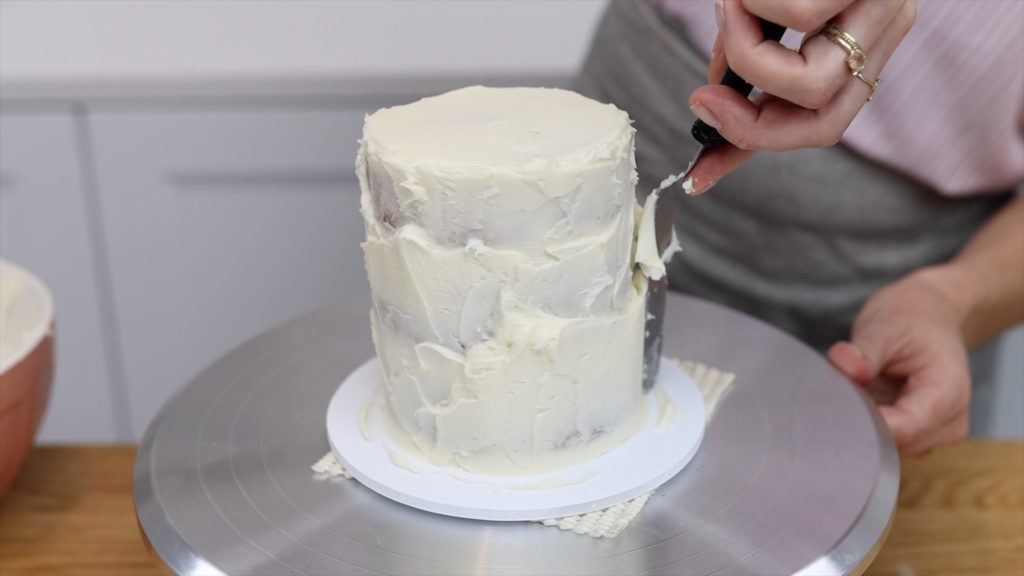
Mistake #6
If you apply the final coat of frosting too thinly, like this, after using your cake comb a few times to smooth the frosting you’ll scrape off all of the frosting and expose the cake layers underneath.
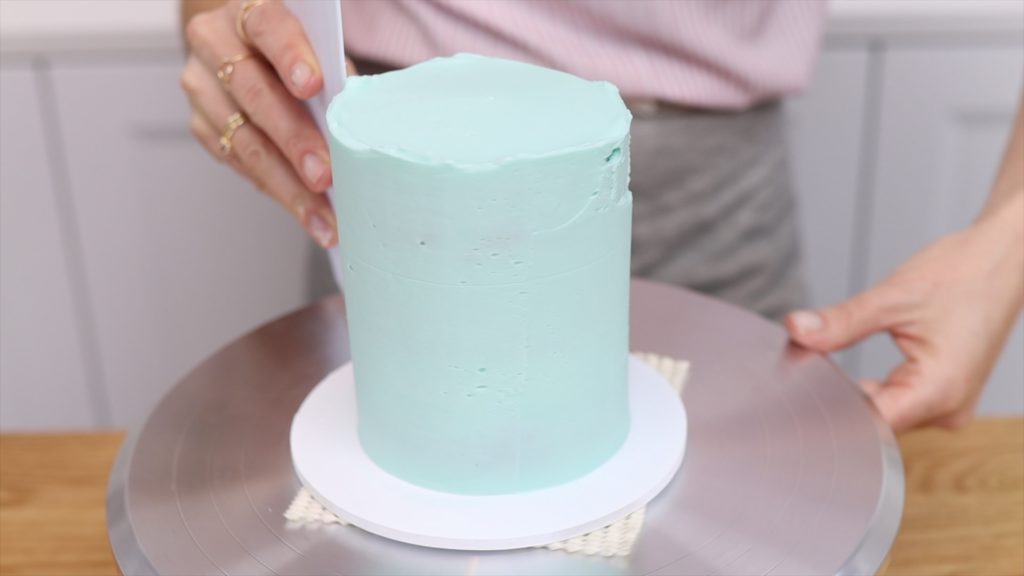
Solution: The solution for this is to spread the frosting on more thickly, which feels excessive but you’re going to scrape a lot off as you smooth it, so it won’t end up being nearly as thick.

Mistake #7
The mistake I see most often is when the frosting doesn’t go up high enough.
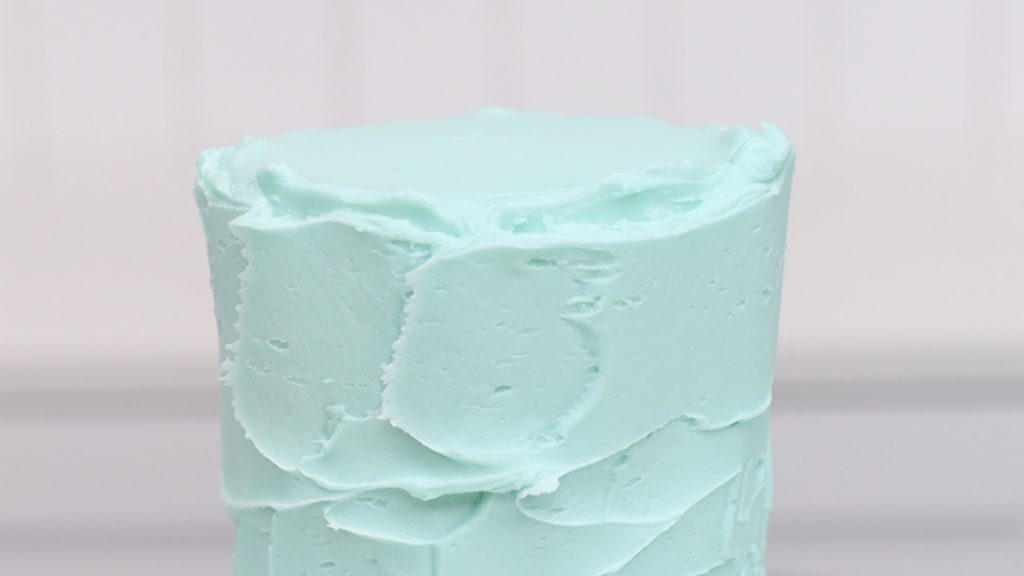
If the frosting stops before the top edge of the cake, you’re going to get indents or gaps around the top edge of the cake when you smooth it, because the frosting on the sides of the cake doesn’t meet the frosting on the top of the cake to form a neat join all the way around the cake. Look at this gap here.
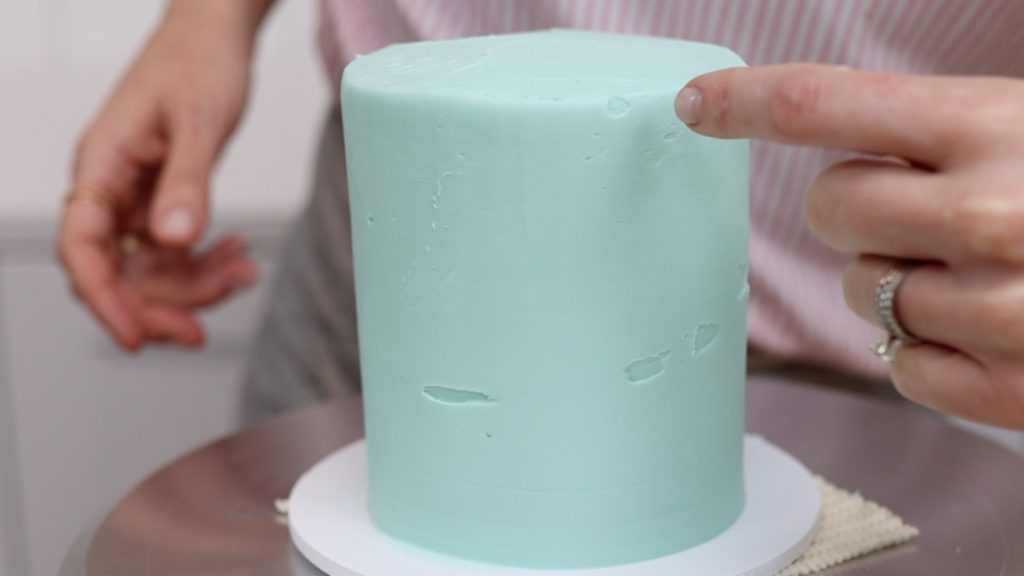
Solution: If you spread the frosting higher, so that it sticks up ABOVE the top edge of the cake, when you tidy up the top edge you’ll create sharp corners with no gaps or indents along the edge.
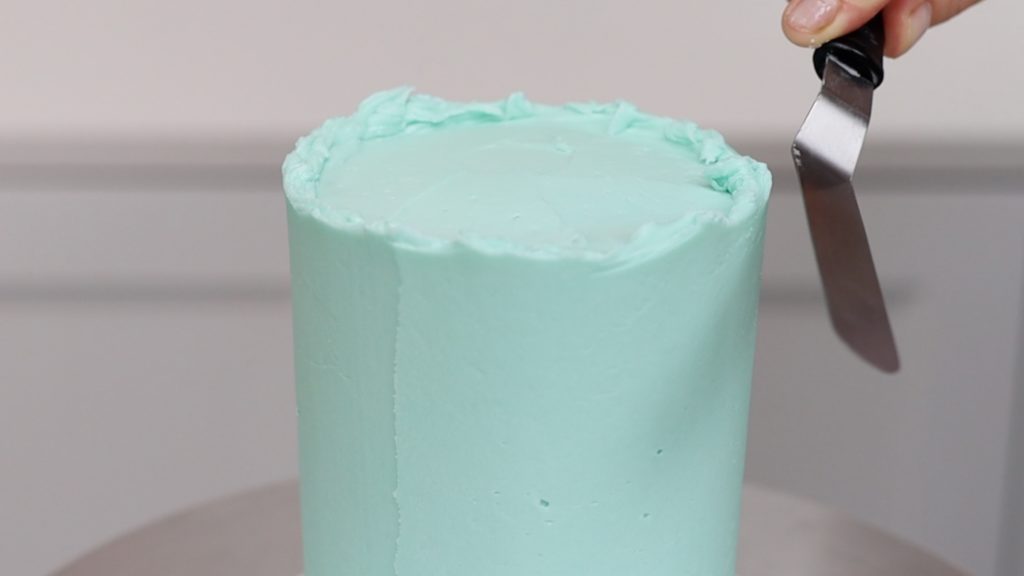
Mistake #8
If you use you cake comb once or twice to scrape around the cake, the frosting will be smoother than when you first spread it on but it won’t be perfect yet because it takes quite a few scrapes to get a flawless surface. If you stop now, your frosting will look like this.
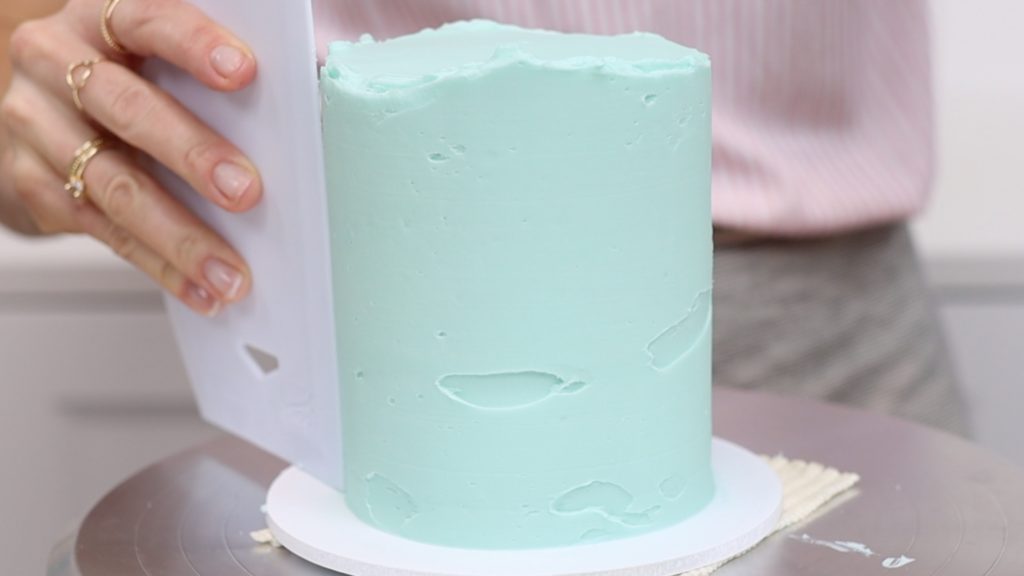
Solution: Instead, do some touch-ups by spreading more frosting over any indents, where the frosting isn’t as thick as it is on the frost of the cake. Then scrape around the cake again with your cake comb to flatten that touch-up frosting and pull off any excess, leaving a beautiful smooth surface behind!
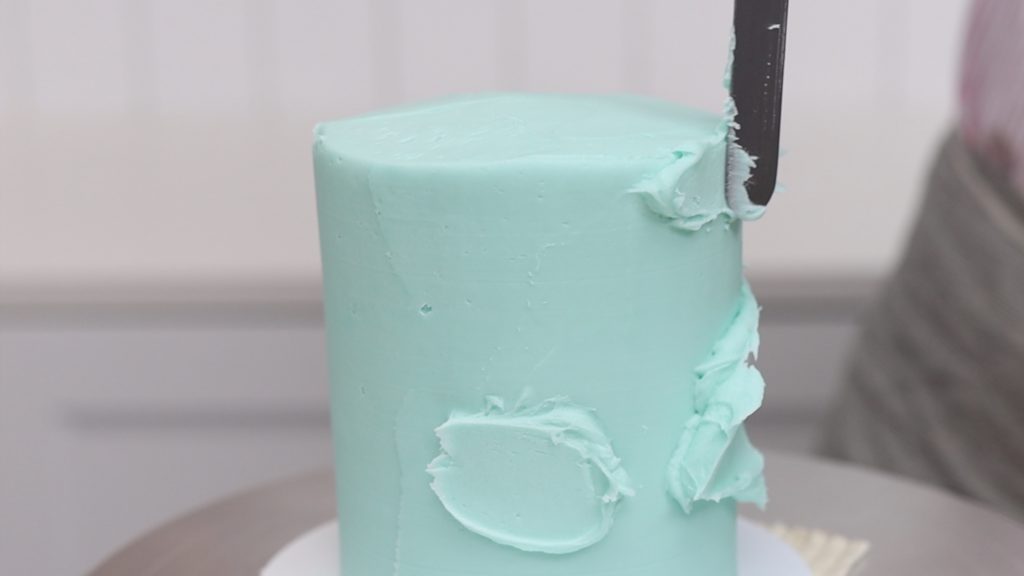
Mistake #9
If your cake comb has been dinged or dented, the surface on the straight side of the comb isn’t going to be perfectly straight and smooth and the ding will leave a trail behind in the frosting as you pull the comb around the cake.
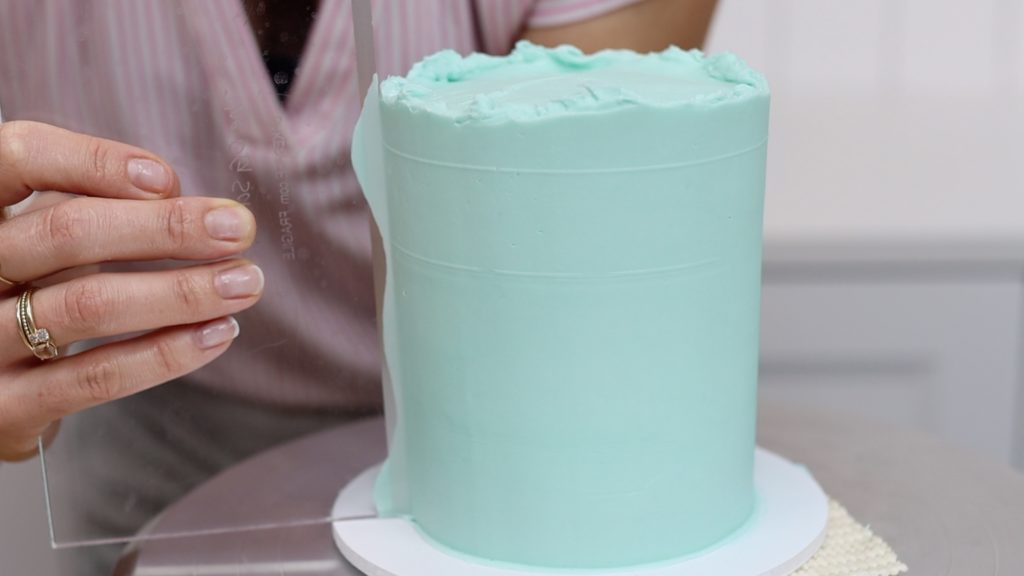
Solution: This can happen with plastic or acrylic combs, and once you realize it’s happened, you can try sanding down the edge or buy a new cake comb.
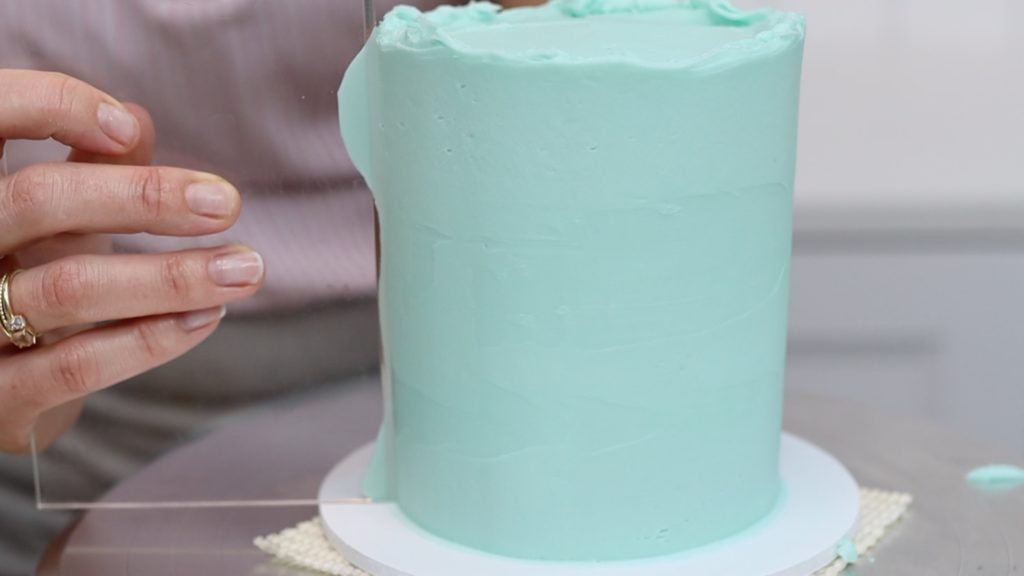
Mistake #10
When you pull your cake comb off the cake at the end of a scrape, you’ll have frosting on the comb. You can see the build-up along the straight edge of the comb here. If you use the cake comb again straight away, you’ll drag that frosting back onto the cake and leave a line of texture going up and down the cake.
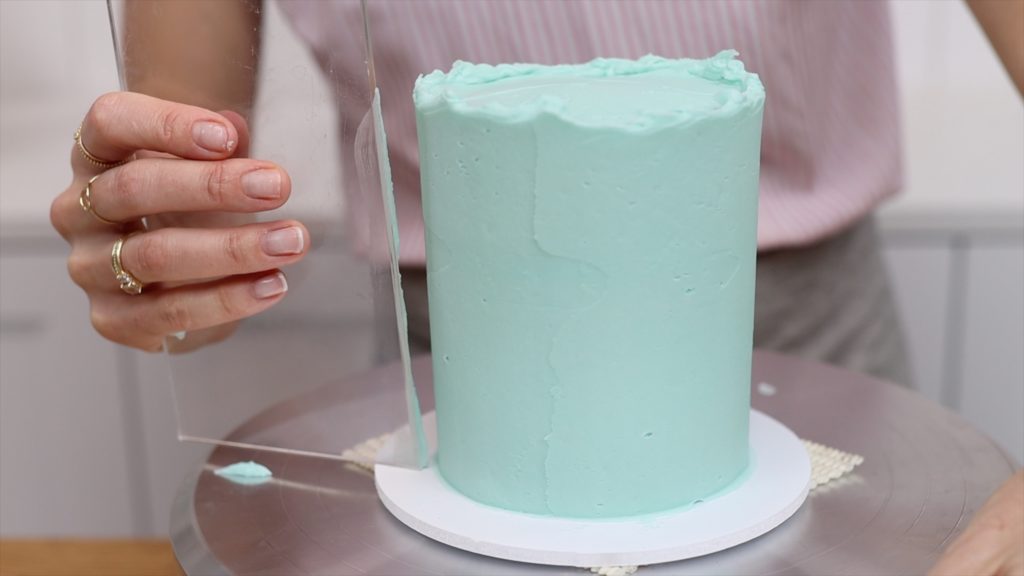
Solution: Instead, scrape that frosting into a bowl and wipe the cake comb clean on a towel or paper towel after every scrape. You'll avoid seams like the one you can see in the frosting here. This way, the only seam or texture you’ll have on your cake is from when you pull the cake comb away from the cake on the final scrape, and you can make that the back of the cake.
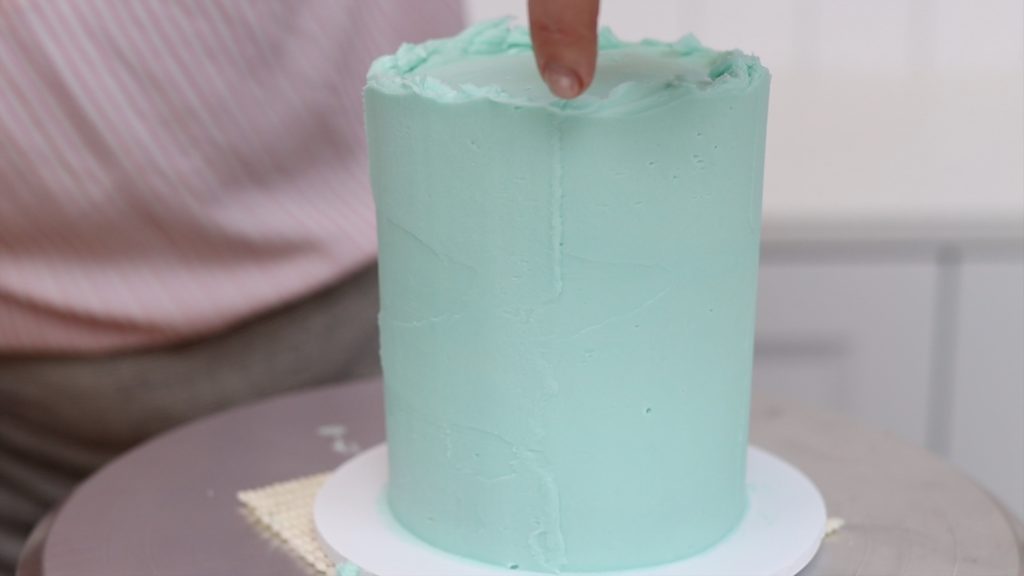
Mistake #11
The kind of turntable you use really matters. This is a plastic turntable and plastic spins jerkily so you’ll notice little vertical lines from the top to the bottom of your cake, which are caused by the cake comb pressing into the frosting with each shudder of the turntable.
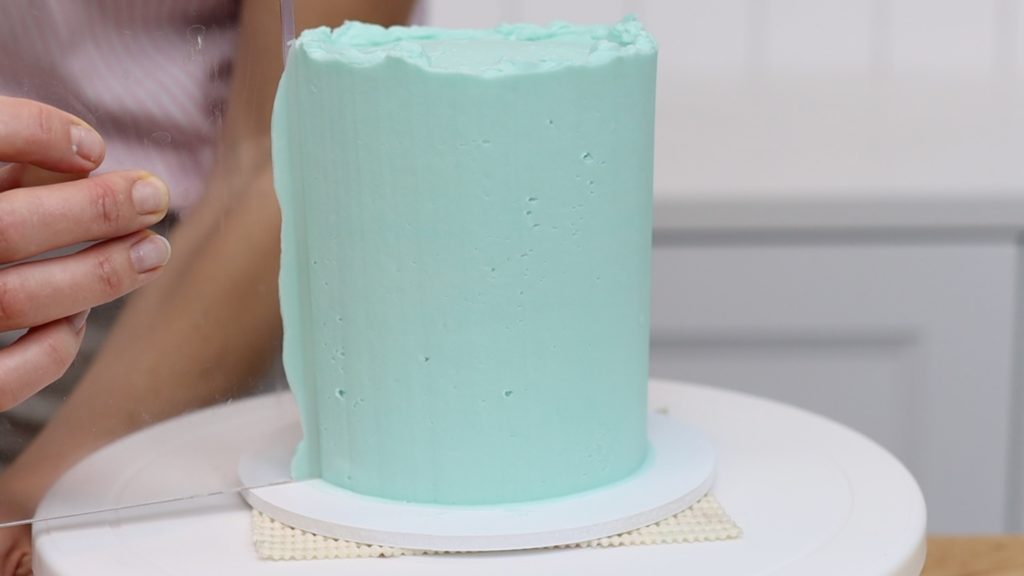
Solution: For much smoother frosting, a metal turntable provides the smoothest spin and you’ll notice the difference on your cakes.

Mistake #12
Your technique for tidying up the top edge of the frosting is important. Look below the right side of my
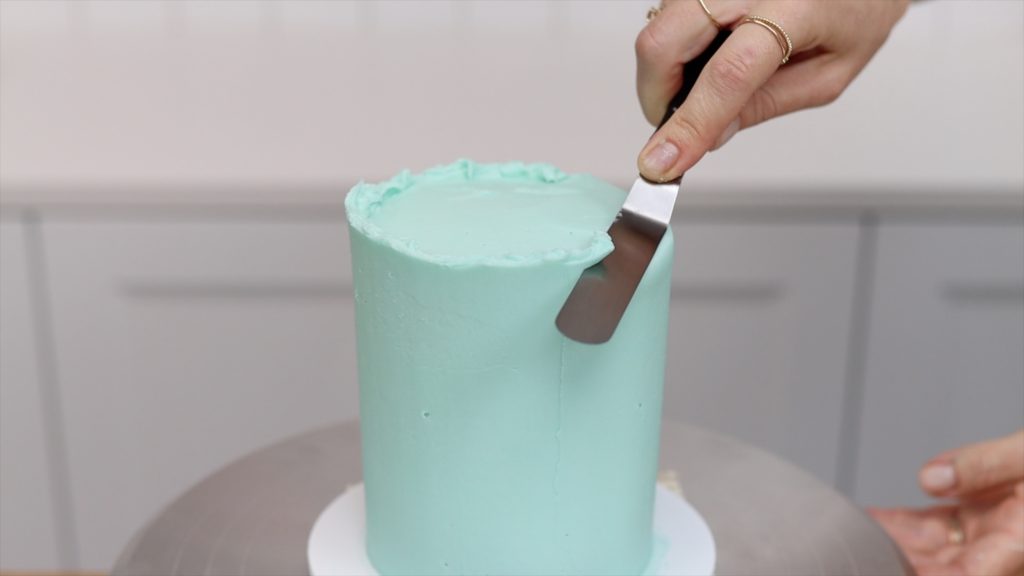
Solution: If that happens, scrape around the cake again with your cake comb to flatten the bulge and then tidy up the top edge by pushing sideways with your offset spatula, not down, and that will push the excess frosting across and lift it off the cake and leave a neat top edge with no bulges.
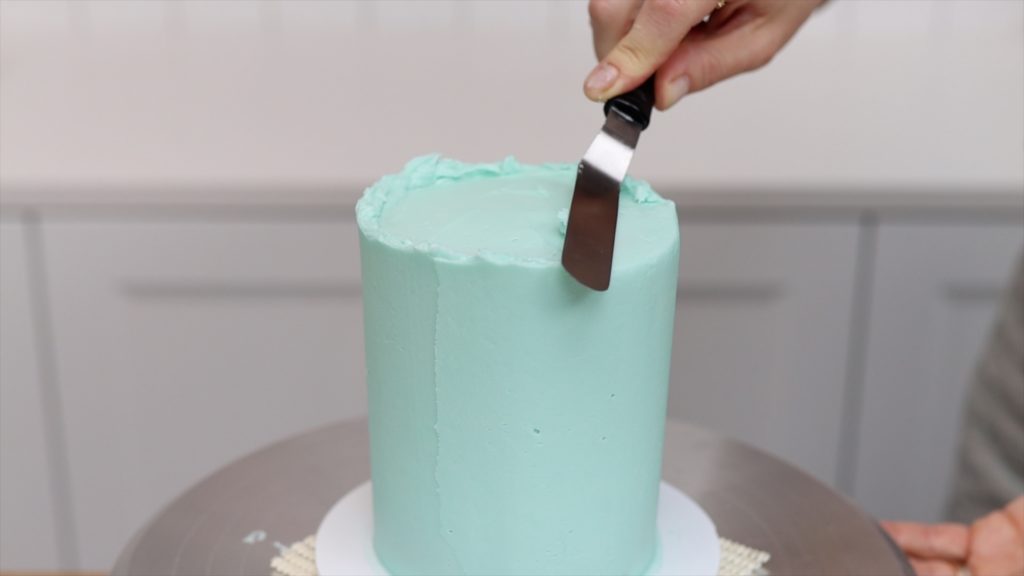
Mistake #13
After you push and lift this frosting that’s sticking up above the top edge of the cake, you’ll have that frosting on your
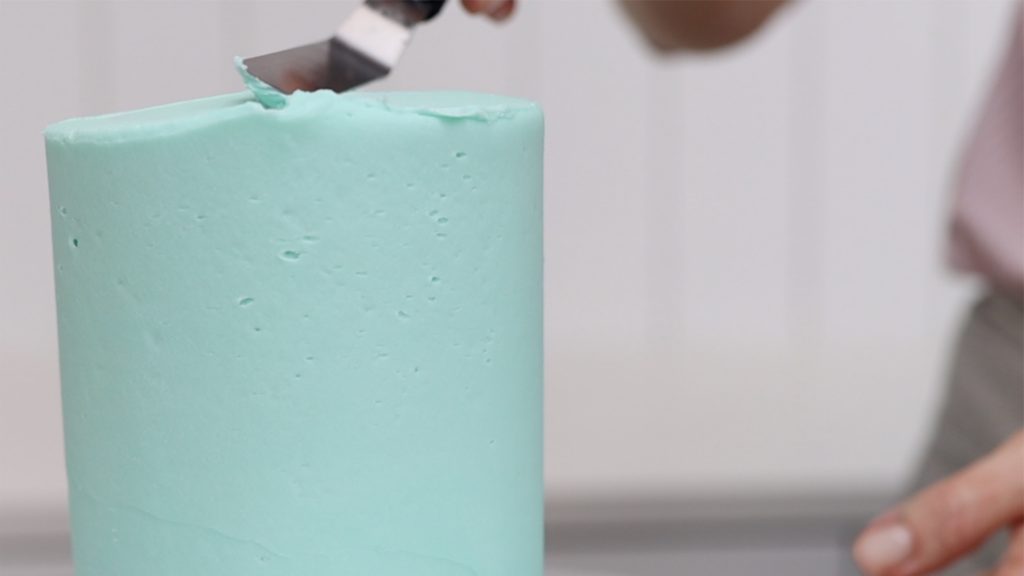
Solution: To prevent this, scape your
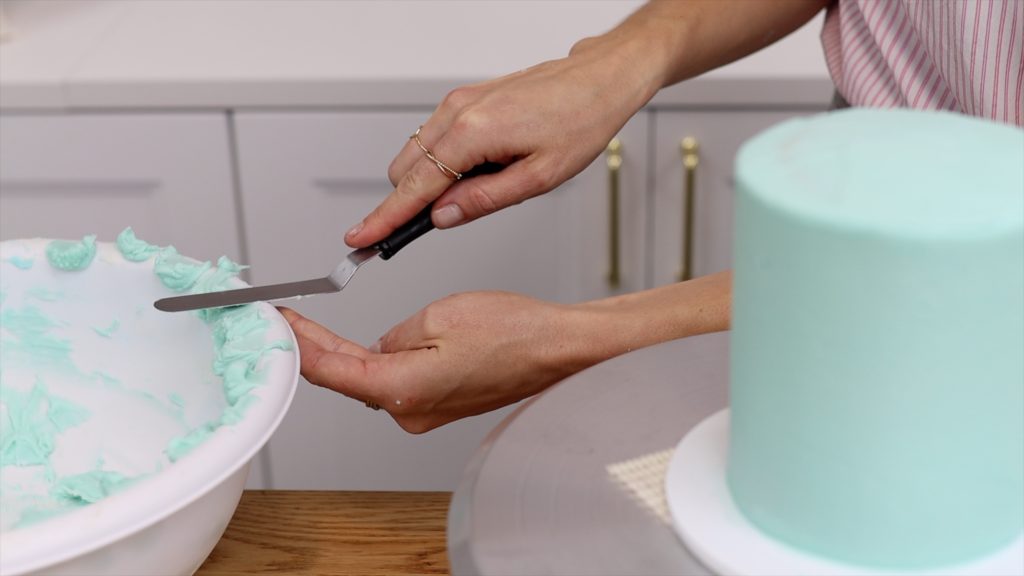
Mistake #14
Patience really is necessary for smooth frosting. If you stop after just a few touchups with your
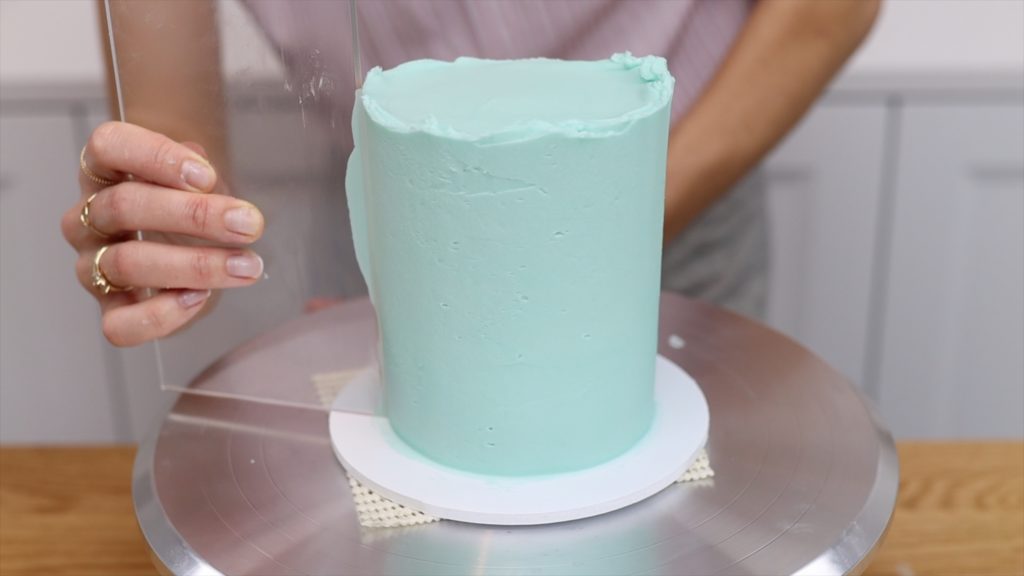
Solution: Whether you're using a plastic, acrylic, or metal cake comb and a plastic or metal turntable, the solution is the same. Keep touching up and scraping, touching up and scraping, and then spin the cake and get down to eye level to see if there are any parts you’ve missed and touch those up, too. The extra minute or two you put into this now, will make a big difference in the finished result of the cake because almost every decorative technique looks best on smooth frosting.
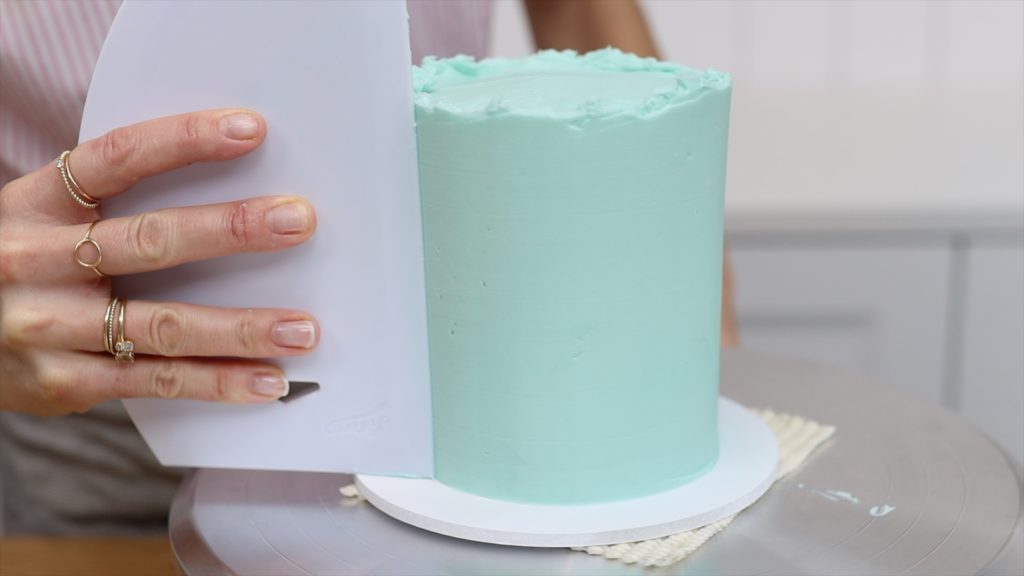
Mistake #15
When you’re happy with your frosting, you’re not finished yet! If you walk away and leave your cake at room temperature, look what happens. This cake was in a cool room overnight and the cake and filling and frosting sank, making the cake lean and bulge and in a few more hours the frosting will crack and the cake might even fall over sideways.
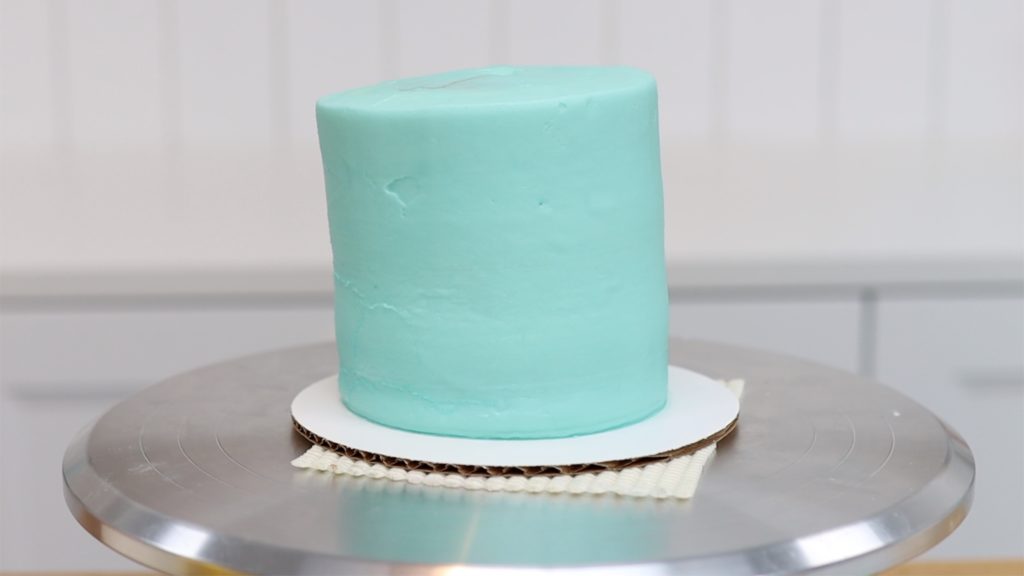
Solution: Put your frosted cakes in the fridge until you’re ready to transport them, or until 2 hours before you’re going to serve the cake. The fridge will keep the frosting firm and pretty and taking it out two hour before serving will bring the cake to room temperature, when it tastes its best.
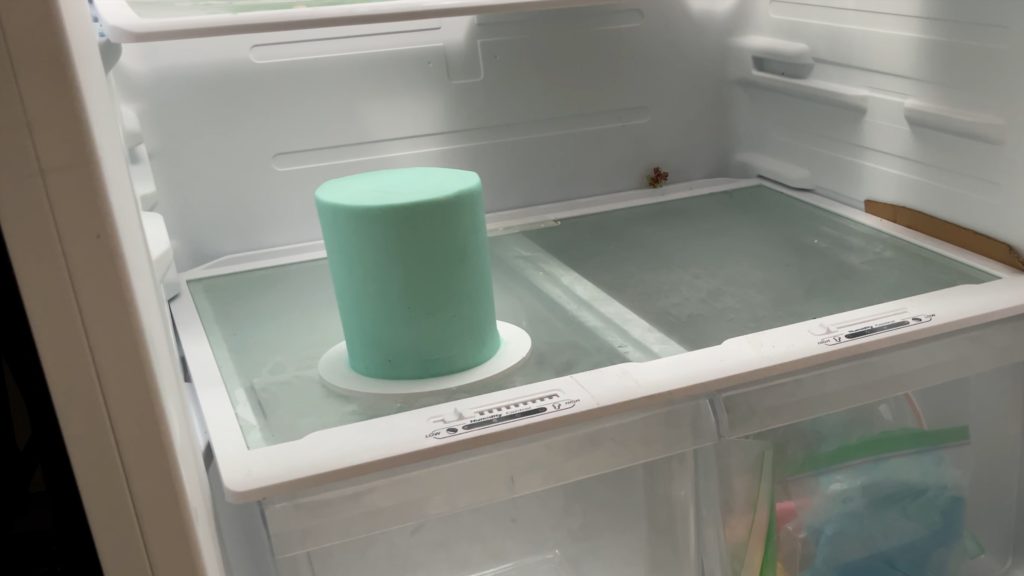
If you’re looking for step by step videos on hundreds of cake designs and techniques, visit my online cake school to browse my MiniCourses and MasterCourses - choose just one or join my ClubPLUS for access to them all!
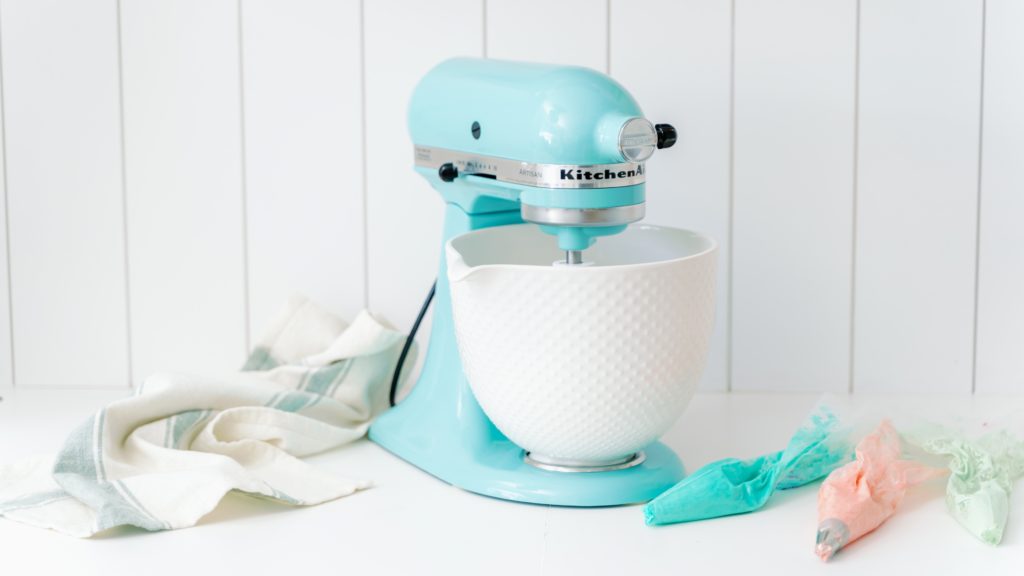
Here's the video version of this tutorial:
